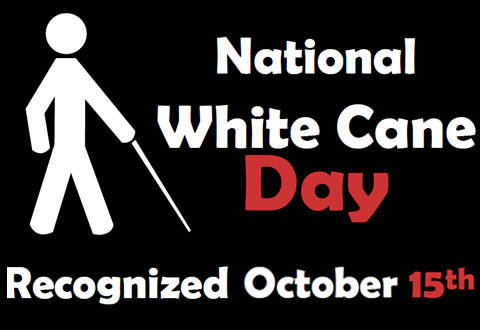By Gloria Riley
“Itty Bitty Guide for Adult Vision Loss”
According to the National Eye Institute, an additional 8 million Americans will be afflicted with vision impairments by the year 2050. There are approximately 76 million Americans now living in this age range in 2020. As this population continues aging, more and more people will become susceptible to various degrees of diminishing eyesight and total blindness.
The White Cane was developed in 1921, when a photographer, James Biggs, lost his vision after an accident. He painted his walking stick white to make it more identifiable. Since then, the White Cane has become a symbol for blind/visually impaired throughout the world.
It took several state organizations and rehabilitation agencies serving the blind community to urge Congress to proclaim October 15th as the National Observance Day every year in all 50 States. It was President Lyndon B. Johnson, who signed HR 753 into law on October 6, 1964. Although October 15th is the official day, many Lions Club Chapters observe White Cane Day during the month of May each year.
It’s important to remember vision acuity, clarity, and sharpness differ with each individual. Some people only see through a fog or blur with one or both eyes. Some have no peripheral vision, while others only see through a center tunnel vision. Others have vision in part of an eye or one eye only. And some people have prosthetic eyes with literally no vision.
Most people have never been exposed to the blind culture and might find it frightening.
You would be amazed to learn that these folks can do almost everything as a fully sighted person, even when seeing details are extremely difficult.
Modem technology has opened many windows for information on this subject. Yet sadly, many citizens remain uninformed of the various practical skills available to ease everyday-living challenges.
It’s a fact that larger cities afford more opportunities, but what about those who live in rural communities and live more sheltered lives?
Here is some etiquette awareness to be mindful of when you encounter a visually impaired or totally blind person:
1. Have a hands-off attitude when you’re going to try and help.
2. Introduce yourself first and then ask them if they need help.
3. Always ask them first, if you might help to walk them across a street.
4. Never just grab them! You wouldn’t grab someone who is sighted.
Tips: Mindful Considerations
Speak up! Let people know how you need them to help you.
People sometimes forget that low vision people can’t do everything the same as the sighted.
People with low vision live independent lives, but there are times they need assistance.
When in an unfamiliar environment, a visually challenged person may need a few minutes to adjust before walking.
It’s important to be mindful that too much noise or commotion can be distracting. They will need extra time to concentrate and focus.
Avoid startling a pedestrian carrying a red and white cane by honking your horn at a stoplight.



